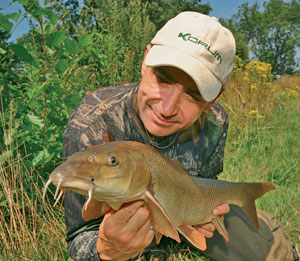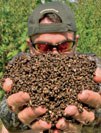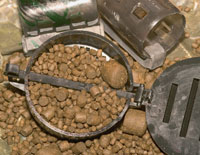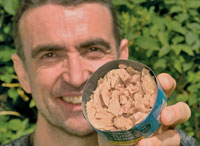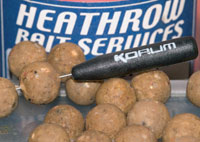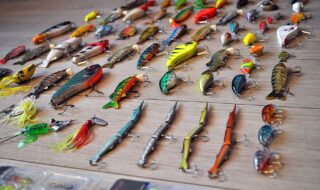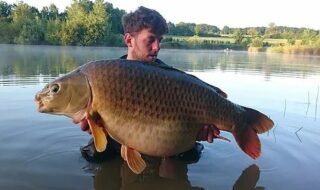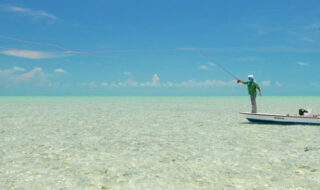Read any texts on barbel and you could well come away with the impression that the species can be tricky to catch, and your best opportunity to put one on the bank is in low light intensities or after dark.
On rivers up and down the country, barbel anglers will often sit it out all day without so much as a sniff before having the only pull round of the day right at the death.
Have the barbel really just switched on or have they always been feeding in the swim?
In most instances I’m convinced the fish have been there all along and it was only with the failing light that our clumsy attempts to fool them start to succeed.
How nice it would be, therefore, to have action all day long and to not have to sit it out and wait for dark!
How nice to catch a shedful of barbel rather than just the one!
Well, the good news is you don’t have to wait, and you can bag up in daylight. It just takes a bit of patience – and a bit of guile!
Barbel are, in fact, not just creatures of the night but one of the most voracious of daytime feeders. The difficulty is not so much getting them to feed but overcoming their natural caution so they are prepared to feed on our bait and in our presence.
Getting them to feed on our bait is not THAT difficult as I hope to show you during the course of this session. It is the getting them to feed in front of anglers that can sometimes be tricky.
In fact, in my view barbel are not especially clever as some might have you believe. But, like all wild creatures, they have innate survival instincts which govern their behaviour.
If we can create the conditions which override these natural instincts then we’re well on the way to catching them.
For this daylight assault I’ve come to Berkshire’s River Kennet, my favourite barbel venue. Despite a changed ecology that’s seen the middle river lose much of its former chalkstream character, it is still one of the UK’s premier barbel waters.
I’m on a Reading and District AA beat not too far from the city centre – the club has miles of quality Kennet fishing on its books to choose from.
I’m on the river early but in no hurry to make a start. Swim choice and preparation are vitally important, and I’ve got to get them right if I’m going to catch.
The forecast is for a bright, sunny scorcher but I’m not too concerned. If all goes according to plan I’ll be home well before sunset!
Make no mistake, barbel are aware of our presence as soon as we set foot on the river bank; a heavy footfall or a sudden shadow, the crunch of gravel as we wind a bank stick into the ground, the splash of a heavy lead – they all spell danger.
Without the cloak of darkness to help me I’m going to be especially cautious. I’m wearing a camou top for a good reason, and although I’m not going to wriggle commando-style through the undergrowth I am going to keep low to the water to avoid being ‘skylined’, especially on high banks. And I’m going to take care to minimise disturbance wherever possible.
Small things like tackling up away from the edge, easing in bank sticks carefully and sitting well back really do make a difference. Never, ever hammer your bank sticks in!
Barbel Bait Tips
|
|
||||
|
|
Not so long ago, I would have used maggots or casters to get the barbel in feeding mode. But there has been an explosion in silver fish populations on the Kennet in recent years, so I’m basing my attack around the pellet instead, to make sure my bait actually gets through to its intended target.
Because everyone but everyone uses pellet I’m going to be a little bit different and use hemp, too – it’s the all-time barbel classic but neglected in these pellet-oriented days.
Getting the baiting right is going to be critical. I reckon there could be good numbers of fish underneath such an extensive area of snags so I’m opting for the groundbait feeder to create a flavour trail throughout the swim. This should pull fish from the very depths of the snags, not just those holding station near the entrance to the open water.
The base of my mix is a 50/50 blend of Dynamite’s SwimStim with crushed hemp. This will wash out of the feeder quickly giving a long downstream scent trail for the barbel to home in on.
To it I add 3, 4, 6, 8 and 10mm Marine Halibut pellets. The varying sizes will disperse different distances from the feeder spreading food items throughout the swim rather than just in one area.
The different-sized pellets will also give my groundbait a variation in texture due to the differential breakdown rates; the smaller pellets will soften quickly whilst the larger ones will retain a little crunch inside a soft exterior.
To finish off I add a good handful of hook bait samples: broken and crumbed Heathrow Bait Services Supa Stench boilies.
Everyone uses pellet hook baits so I’m looking to do something different to catch the fish unawares.
 |
| Ian applies the sidestrain as a hooked Kennet barbel runs for cover. |
I do have a few drilled 14mm pellets and some spicy birdfood boilies with me as a change can often provoke a renewed response if it’s gone quiet.
I mix the groundbait with the juice from a 2.5l jar of frenzied hemp and a can of tuna fish in oil. Tuna is a terrific fish attractor and complements the fish-scented boilies and groundbait perfectly.
I don’t add my hemp to the groundbait mix as it will dry out quickly and starts to float. The last thing I want is the hemp floating out of the swim and possibly taking the fish with it, so I keep it separate and introduce it via a bait dropper (see panel).
I start off putting a couple of droppers tight to the snags and then start to concentrate the feed at the edge of the raft – this encourages the fish to move upstream and out of cover.
I don’t want to get all the bait out in one hit but gradually introduce it during the course of the session. I’m looking to create a competitive feeding situation with the barbel picking across the area and competing with one another for every last piece of food.
By doing this I should sustain feeding activity for several hours with the fish moving up and ‘working’ the area, always on the lookout for new items. Putting out too much too soon would kill the swim as there would be no need for the barbel to compete. Little and often is the way.
With the first of the hemp out I now start to put a loaded feeder into the swim. I’m using a tough, plastic Preston model that is all but indestructible and perfect for repeated, regular casting into hostile terrain with no danger of it ever splitting.
To give a camou effect I use a marker pen to break up the clear plastic profile (see this issue’s Barbel Clinic for my maggot feeder set-up). For daylight barbel fishing attention to detail such as this really makes a difference. As with the hemp I’m casting at regular intervals to introduce small amounts of feed.
At this stage I’ve not even clipped on my hooklength. I’m just baiting with the feeder and not actually fishing. The longer you can keep your swim baited without actually introducing a hook bait the better.
The single most common mistake most barbel anglers make is casting out too soon.
It is imperative to give the barbel time to build up confidence feeding over an area and the longer they can feed undisturbed the more confident they will become. I plan to feed for at least a couple of hours before I put a hook in the swim!
Cast out early and you may well catch a single barbel but that is all you will catch. Steadily build up confidence over a couple of hours and you may well end up catching the whole shoal!
With the feed now going in regularly it’s time to get my rigs sorted.
Barbel everywhere are getting bigger and with snags close at hand I’m not going to be fishing light, but doing everything I can to avoid spooking the fish (see Tackling Up For Barbel panel).
 |
| If you can get fish feeding confidently before fishing, you can catch barbel after barbel like this in daylight. |
The only other essential bit of kit is my landing net handle. With so many river swims on high banks it is vital to ensure you can net fish safely.
My Korum model has a purpose-built extension which I can add to increase my reach. It opens up otherwise unfishable areas, and today on my high bank position it is totally invaluable.
I clip on my hooklength after the barbel have been allowed to feed undisturbed for a couple of hours and put the first cast just off the leading edge of the raft. With the rod in the rests I engage the free spool; most barbel anglers tend not to use this facility but I feel a correctly tensioned free spool that will just start to click as the rod reaches full compression makes for a more progressive type of bite, giving less opportunity for the hook to pop out.
If I’ve got it right I should have a response very quickly, and sure enough, within seconds, the rod is dragged round and the Baitrunner kicks in nicely.
It’s a fish of around the 5lb mark and with it safely unhooked and returned my first job is to get another couple of droppers of hemp out before putting the feeder back in position. It is vital to keep feeding now and keep the fish confident.
Within half an hour I’m into a better fish, this one weighing around 7lb, and this sets the pattern for the rest of the day.
Although it is hot and bright I’ve got the fish feeding confidently, and by keeping a steady trickle of feed through the swim they keep coming, despite conditions most barbel anglers would consider positively hostile!
By 7pm I’ve netted some 15 barbel to just over the 9lb mark and I’m ready to go home – at the same time many barbel anglers would be looking to arrive, and well before most would have expected to get their first bite of the day!
Find your barbel, feed without disturbing them, and you can catch them whenever you want!
Daylight Swim Selection
After dark barbel will leave cover and range far and wide in their feeding. But daytime barbel are less easily persuaded to do so and, for this reason, swim selection is particularly critical.
Barbel location is governed by many factors, but for successful daylight fishing I’m particularly concerned by two: current speed and cover.
Many classic barbel swims are found at the junction of currents of two different speeds, or ‘creases’ as they are called. Admittedly these are terrific areas to target but better still to increase your chances of daytime success are areas where the river suddenly picks up speed.
Weirpools are a classic example offering well-oxygenated water, increased current speed and, frequently, areas of cover, too.
They are always worth a cast for an opportunist daytime feeder but not always reliable, and the variable current patterns can make bait application tricky (creating the correct feeding situation is, of course, the key to successful barbel fishing).
Better are areas where the river constricts, forcing the water through at an increased pace; alongside islands, gravel shallows or obstacles are perfect examples.
If the water deepens as well as speeds up it is a real daytime delight – get in there!
 |
| Ian had to cast tight to a raft of debris |
Looking For Cover
Snags mean sanctuary. So barbel, like most fish, feel safest when surrounded by underwater obstacles or with a roof over their heads.
Barbel will hold up in cover during the day and venture out to feed after dark. But if you are quiet in your approach and precise with your baiting you can persuade them to come out early.
The key is not to crash into their holding area and spook them in the comfort of their own homes, but to take time and persuade them to come out of their own accord.
Think of it as knocking gently on their door and waiting for them to answer rather than crashing into their bedroom with a battering ram!
Today I’ve found the best of both worlds. The river narrows slightly, deepens and picks up pace as it rounds a bend and this faster current then pushes straight into a jungle of snags.
A raft of debris has built up at the front of the snags and all sorts of flotsam is present; there are bottles, boards, balls, bags and bits bobbing around – it’s a right eyesore but I bet there are barbel in residence beneath it!
Using A Bait Dropper
A dropper is an essential tool as it gets bait to the bottom quickly and exactly where you need it.
You should never throw or catapult feed into a barbel swim as you cannot gauge exactly where the current will take it, and you risk splitting a shoal of fish or, worse, losing them from the swim altogether.
Even with a dropper you need to be accurate to get the barbel feeding precisely where you want them. I prefer the black plastic Thamesley models which are easily overcast and skimmed across the surface until they are in exactly the right spot in the swim.
Allow the dropper to hit bottom and leave it a few seconds to empty its payload. Under no circumstances lift it straight away as the contents will be released off bottom and be washed too far downstream. Tight baiting is critical.
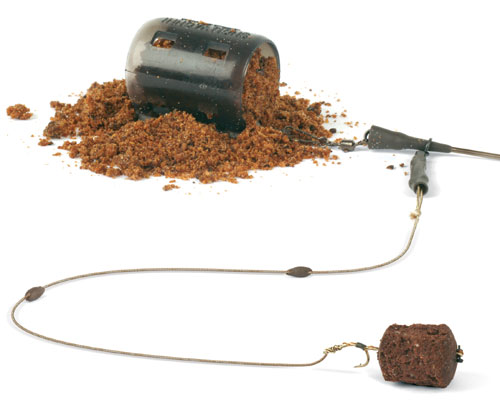
Tackling Up For Barbel
The rod, a Korum Neoteric Twin Tip with the 1.75lb top fitted, has been coupled with a small Baitrunner reel loaded with 12lb X-line fluorocarbon, which sinks like a stone and is almost invisible underwater.
It is important to keep as much of your end tackle pinned to the bottom to prevent the barbel brushing against it as they browse; not only would hitting the line risk spooking them but you also run the risk of striking at line bites and causing real chaos!
Sit on your hands and ignore the taps, trembles, twitches and quick plucks; wait for the rod top to go round and stay round!
I use a Korda flying backlead to enhance the pinning down effect and below this I’ve got my feeder on a large diameter run ring free-running on a Safe Zone leader.
Hooklength is 15lb Sufix Camo Skin with the bottom two inches stripped back to create a flexible hinge. The hooklength is pinned down both at the hinge and a couple of inches above it with a size 8 Stotz wrapped with a tiny blob of Kryston’s Droppem putty. I do the same again further up the hooklength.

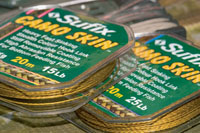
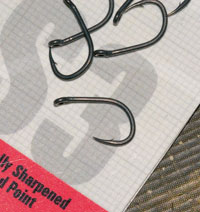
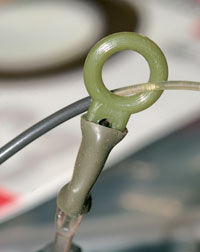
Subtlety is the name of the game at the sharp end, too; far too many people use hooks and hook baits that are much too large for daylight barbeling.
Think particles and scale everything down. I’ve every confidence in a size 12 Korum S3 hook, even for the biggest of barbell, and I use scissors to whittle down my boilie to match.
This has the added advantage of releasing flavours into the swim quickly and giving the fish an unusual shape – on hard-fished waters they may well have got wise to the dangers of taking round boilies.
I will occasionally step up to a size 10 hook if the situation demands but rarely see the need to go bigger than that.
Ian’s Pinned Down Hooklength
|
|
||||
|
|
||||
|
|
tcf Top Tip
To prevent his groundbait from drying out during the course of a long, hot session, Ian covers his mixing bowl with a towel. Tight fitting lids or buckets are impractical when you are filling and casting a feeder regularly; a towel, however, is not only easily lifted to allow access but perfect for wiping your hands on afterwards, too!
Tcf Top Tip
Today Ian got it right and persuaded the fish to feed during daylight. At other times it may be that he’ll have to wait until dark for the fish to gain that extra confidence. For this reason he has a clip-on Betalight holder permanently attached to his rod tip. “A night sight is essential to show indications as the light fades, or you could add a coloured sight tip to make your tip stand out more clearly against daytime backdrops,” he said.


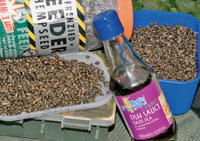
Advanced Tip
Although hemp is inherently attractive to barbel it benefits greatly from being spiced up a little, and Ian tailors it to match his groundbait and hook baits by adding a couple of tablespoons of Nam Pla – or Thai fish sauce. This additive, found in most supermarkets, is made from fermented anchovies and adds a really salty and zingy fish taste to the seeds. A couple of tablespoons per jar added the night before your session is about right. By morning the seeds will be humming nicely and the juice is perfect to add to your groundbait!


